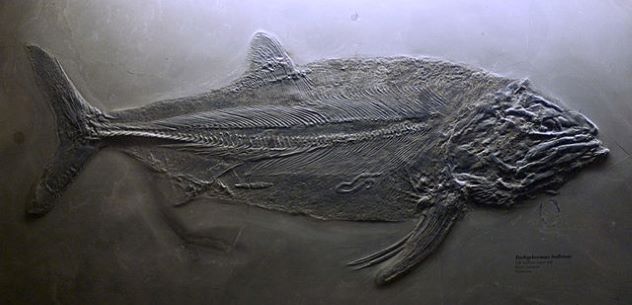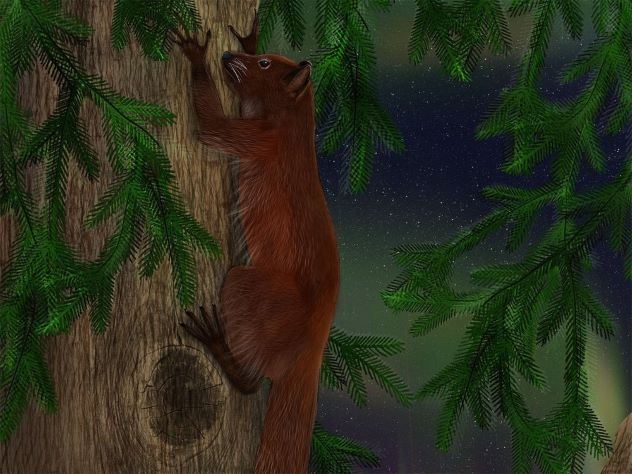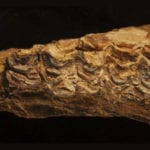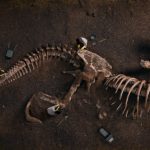 Technology
Technology  Technology
Technology  Humans
Humans 10 Everyday Human Behaviors That Are Actually Survival Instincts
 Animals
Animals 10 Animals That Humiliated and Harmed Historical Leaders
 History
History 10 Most Influential Protests in Modern History
 Creepy
Creepy 10 More Representations of Death from Myth, Legend, and Folktale
 Technology
Technology 10 Scientific Breakthroughs of 2025 That’ll Change Everything
 Our World
Our World 10 Ways Icelandic Culture Makes Other Countries Look Boring
 Misconceptions
Misconceptions 10 Common Misconceptions About the Victorian Era
 Mysteries
Mysteries 10 Strange Unexplained Mysteries of 2025
 Miscellaneous
Miscellaneous 10 of History’s Most Bell-Ringing Finishing Moves
 Technology
Technology Top 10 Everyday Tech Buzzwords That Hide a Darker Past
 Humans
Humans 10 Everyday Human Behaviors That Are Actually Survival Instincts
 Animals
Animals 10 Animals That Humiliated and Harmed Historical Leaders
Who's Behind Listverse?

Jamie Frater
Head Editor
Jamie founded Listverse due to an insatiable desire to share fascinating, obscure, and bizarre facts. He has been a guest speaker on numerous national radio and television stations and is a five time published author.
More About Us History
History 10 Most Influential Protests in Modern History
 Creepy
Creepy 10 More Representations of Death from Myth, Legend, and Folktale
 Technology
Technology 10 Scientific Breakthroughs of 2025 That’ll Change Everything
 Our World
Our World 10 Ways Icelandic Culture Makes Other Countries Look Boring
 Misconceptions
Misconceptions 10 Common Misconceptions About the Victorian Era
 Mysteries
Mysteries 10 Strange Unexplained Mysteries of 2025
 Miscellaneous
Miscellaneous 10 of History’s Most Bell-Ringing Finishing Moves
10 Peculiar Fossils That Hid Surprising Facts
Earth looked a lot different in the past. Bizarre animals lived and died, and we continue to dig up their bones today. In the last year or two, a rich trove of unique finds came to light. Not only were they unusual, but they also revealed unknown facts and solved old mysteries (or created new ones!).
This list looks at the latest discoveries that raise the bar on fossilized strangeness, including Arctic apes that lived in total darkness and how birds with T-Rex heads could answer one of the most vexing questions in paleontology.
Related: 10 Amazing Fossils Found In The Sahara Desert
10 A T-Rex Cousin That Swam
The newly discovered Natovenator polydontus wasn’t closely related to the T-Rex, but both belonged to the same group called theropods. Dinosaurs in this group walked on their hind legs and were mostly meat-eating. They were also land animals. But Natovenator polydontus decided to be different.
Not only was it a lot smaller than some of the most famous theropods (it was about the size of a duck), but it was also the first non-avian theropod that took to the water. Ironically, the region where it lived around 72 million years ago is now Mongolia’s Gobi Desert.
The creature had a noodle-like neck like a goose and a streamlined body like a penguin. Even its forelimbs were flipper-like, and its ribs were similarly articulated to those of aquatic diving birds. The discovery showed that even though N. polydontus was not avian—thus not being a bird in any way—they still evolved to look exactly like birds.[1]
9 Bizarre Pre-Dinosaur Creatures
In 2022, researchers unearthed fossils in Wales, and it soon became clear that the animals were going to leave behind a mysterious legacy. The creatures once lived in the ocean between 485.4 million and 443.8 million years ago—long before the first dinosaur. They had soft bodies and a trunk-like nose with spikes and propelled themselves through the water with undulating flaps lining their sides. Underneath these flaps were rows of stumpy legs.
Nothing alive today resembles these odd blobs. Even opabiniids, which are the closest thing in the fossil world, aren’t a perfect match. While there is some resemblance, the differences are also too distinct. Opabiniids lived almost 40 million years earlier and had five eyes. The new critters, named Mieridduryn bonniae, had none. Opabiniids also didn’t have spiky snoots.
Scientists are unsure if M. bonniae is a type of opabiniid or an unrelated species that just happens to look the same. Complicating the mystery is the fact that M. bonniae, measuring 0.5 inches (13 millimeters), wasn’t found alone. The same quarry also produced a smaller specimen of 0.1 inches (3 mm). Was this a larval stage of M. bonniae? Or was the second creature an opabiniid, as its fanlike tail and back furrows suggested? Until experts can figure that one out, the smaller fossil will remain unnamed.[2]
8 A Fossil Food Chain

In 2022, a farmer from Gloucestershire gave his permission to fossil hunters to search his property for ancient gems. It wasn’t long before they discovered that the cattle farm sat on a rich fossil seam from the Jurassic era. In fact, near one of the barns, an entire food chain came to light. There were dolphin-like ichthyosaurs that preyed on a large fish called Pachycormus which, in turn, hunted smaller fish, insects, and squid.
The star discovery was the head of a Pachycormus. Most fossils are found flat or squashed but not this noggin. It had been preserved with such a degree of realism that it looked like a 3-D carving of a fish about to attack. Thanks to this rare find, researchers don’t even have to reconstruct anything to see what the frightful tuna-like predator would’ve looked like.[3]
7 Toothy Pterosaurs with Flamingo Habits
Classic illustrations of pterosaurs often show the flying reptiles soaring through the sky, their straight bills agape and packed with tiny teeth. But in 2023, researchers announced a new pterosaur, and it was unlike anything they’d ever seen.
The creature, which perished 157 million years ago in what is now Germany, was a toothy wonder. When they were done counting, scientists had identified almost 500 teeth, making it the second-highest number ever found in pterosaurs. However, the snappers were also hooked and finely spaced like a lice (nit) comb—and that was something that had never been reported before.
This dental abundance was oddly lacking at the front end of the reptile’s beak, which was also curved upward. The rest of the bill was also not straight. Instead, it was oddly similar to those of spoonbills. All of this suggested that this species, which belonged to the family Ctenochasmatidae, was a filter feeder and that it ate like a flamingo while wading in shallow bodies of water.[4]
6 The Real Ninja Turtles
Okay, they didn’t know Kung Fu, and they couldn’t talk. But Stupendemys geographicus was no turtle to be trifled with. The species, which existed roughly 10 million years ago, is not new to science, and they’re mostly known for their mind-boggling size. They weighed almost the same as a hippo and grew shells longer than a grown man and up to 10 feet (3 meters) wide.
But in 2020, researchers announced that they had discovered complete skeletons for the first time. And what they found revealed that the reptiles probably fought epic battles among themselves and also successfully fended off ferocious predators. Indeed, their shells were scarred by the bite marks of giant caiman, crocodilian creatures that could grow as big as 40 feet (12 meters) long.
Part of what made these turtles so powerful was that the males had a deadly horn on each “shoulder” of their shell, measuring a foot (0.30 meters) long. Their jawbones also showed that they were formidable hunters themselves and probably preyed on smaller turtles, fish, and mollusks.[5]
5 A Pterodactyl with Opposable Thumbs
During the Jurassic period, pterodactyls flew like birds. But they didn’t live in trees like birds do today. Then in 2021, scientists named a new species from China that could possibly be the first tree-hugging pterodactyl. Its official name was Kunpengopterus antipollicatus, but because the creature had opposable thumbs like a primate, it also earned the nickname “Monkeydactyl.” This odd feature hinted that the reptile could easily grasp branches.
To confirm whether the animal had the necessary skeletal and muscular structure to shimmy up a tree, researchers scanned the 160-million-year-old fossil and created a 3-D model. True enough, it showed that Monkeydactyl had the right stuff for climbing. One theory holds that this pterodactyl species took to the trees instead of more traditional environments to eliminate competing against other pterosaurs for food and space.[6]
4 The Darkness Apes

One might be forgiven for thinking there’s no such thing as Arctic apes. But 52 million ago, such primates did exist. A study that was released early in 2023 revealed that the Arctic Circle had at least two species, now called Ignacius dawsonae and Ignacius mckennai. These animals were squirrel-like and weighed about 5 pounds (2.26 kilograms), a big size for the time.
What makes these animals so remarkable is the fact that they found a way to survive in a hellish environment. They lived on what is now Ellesmere Island in Canada, where the polar winter brought six months of darkness. Even though the Arctic was swampy and warm during this time, the long “night” was not ideal for normal plant growth and, as a consequence, not a good place for herbivores.
But their fossils revealed that these primates had a brilliant adaptation. Their jaws were incredibly powerful, ultimately enabling them to chew and eat the tough vegetation that managed to grow in a sunless environment.[7]
3 Ancient Giraffes Crush Old Assumption
For a long time, it was thought that giraffes had long necks so that they could eat foliage without the need to compete with other herbivores. But a recent discovery suggests that the ability to reach food that other animals cannot happened more by accident than design. The real reason why giraffes evolved such loopy necks was aggression.
The 17-million-year-old fossil belonged to an ancient giraffe relative called Discokeryx xiezhi. Its neck was too short to fight like male giraffes do today, who swing their necks and use their heads like clubs to deliver brutal headbutts. Interestingly, D. xiezhi also headbutted, just differently. With their specialized skull plates and neck bones, they were highly adapted to knock their heads together at high speed.
Scientists believe that these courtship competitions drove giraffes to evolve a unique skeletal structure in their necks—and the equally unique fighting style that we see in modern giraffes today. This extreme lengthening of the neck took about two million years and, as a bonus, also provided these animals with a free buffet of high foliage.[8]
2 The T-Rex Bird
Modern-day birds are descendants of dinosaurs. Ever since this fact was discovered, experts have been puzzled. How on earth did this remarkable event occur? It wasn’t a simple left turn in evolution. The transition from stegosaurus to sparrow (so to speak) called for one of the most dramatic changes in body shape, diversity, and adaptation to new environments that the natural world has ever seen.
What clouded the issue was a lack of physical evidence. No ancient skeletons stood up and volunteered information about how dinosaurs turned into birds. Then, in early 2023, researchers announced a bizarre fossil that might change all that. Called Cratonavis zhui, the creature lived in China around 120 million years ago, and incredibly, it was a bird with the head of a dinosaur.
To prove that this wasn’t some kind of fluke, the skeleton was scanned and digitally reconstructed. It wasn’t a mistake. The body was truly bird-like in appearance and function but not the head. Instead, the skull was very similar to that of a T-Rex. That’s a lot to unpack for researchers, but the unique anatomy of Cratonavis zhui might just be the key they need to finally crack the mystery of the epic dinosaur-bird transformation.[9]
1 Mystery of Sicily’s Elephants Solved
Sicily was once home to two species of miniature elephants, and the smallest one was about the size of a Shetland pony. While their adorable fossils are nothing new, scientists wondered where they came from. Since there was DNA present in the bones, the next natural step was a genetic test. In 2021, when the results were made public, it told a story that nobody could’ve invented in their wildest dreams.
Between 70,000 and 200,000 years ago, a population of elephants migrated to the island. These were not your average pachyderms. They were Palaeoloxdon antiquus, giants that stood nearly 15 feet (4.5 meters) tall and weighed more than 30,864 pounds (14,000 kilograms).
To survive the limited resources of the island, the elephants started to shrink at a striking pace. Every generation was smaller by hundreds of pounds. Within just 40 generations, they dropped 85% of their original mass and went from one of the biggest land mammals ever to exist to “pony” elephants.[10]








